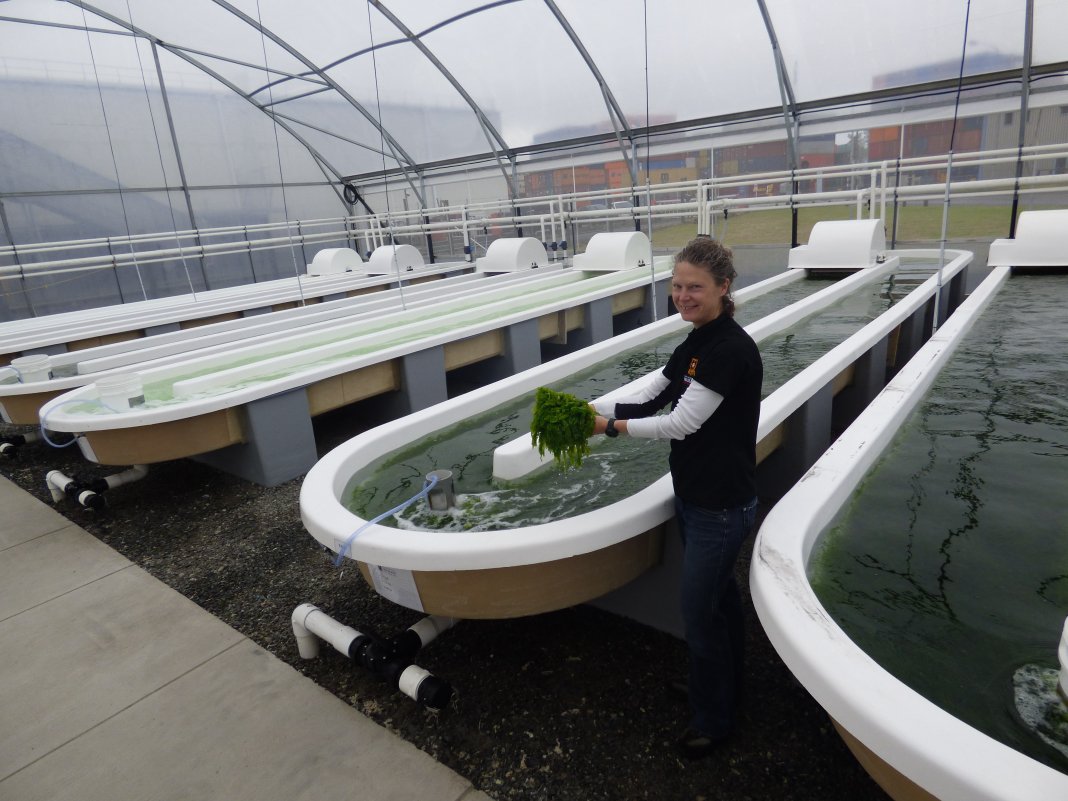A new Waikato University research project has added to the portfolio of ventures within the Sulphur Point marine precinct at Tauranga, with some cutting-edge work exploring the commercial options for one of the country’s most common seaweeds.
The university’s researchers have recently celebrated the commissioning of a 1000sqm seaweed research facility opposite the university’s coastal marine research base on Cross Road.
The University of Waikato’s coastal marine field station at Tauranga is the centrepiece for the university’s new aquaculture major, offered at the university’s Tauranga campus.
The scientists have been working on sea lettuce (ulva), the annoying seasonal green seaweed that can often clog the Main Beach and harbour reaches, piling up in stinky green layers in the summer heat.
The work has been focusing upon producing soluble fibres with bio-active properties for stock feed additives and nutraceuticals for human health benefits. Another by-product of these processes is cellulose, suitable for use in medical materials.
Funded with $4 million from the Tertiary Education Commission and $9 million from the university, the facility includes 12 4000 litre fully recirculated growing ponds and 12 1000 litre ponds, split between freshwater and saltwater.
[We are] confident the Waikato University researchers will move from the big tank trials to sea trials within a year.” – Dr Marie Magnusson
Lead researcher Dr Marie Magnusson says the facility provides her and her colleagues with the opportunity to explore an array of seaweed and algae through their growth stages, studying multiple uses for the plants.
Opportunity to rear algae
The freshwater ponds mean algae can be reared. Researchers will study their role in bio-remediation, the biological clean-up of waste-water and polluted waterways, including dairy farm effluent and urban wastewater.
Such algae also have a high protein content, making them suitable as a feed additive for animals.
“Closed loop” aquaculture systems are also due to be studied, with sea lettuce requiring carbon dioxide to grow, while fish breath carbon dioxide out, meaning the two may be able to be farmed in balance.
Given sea lettuce only takes two to three weeks to grow to harvestable size, it is an appealing crop from a commercial perspective.
Dr Magnusson is confident the Waikato University researchers will move from the big tank trials to sea trials within a year.
In its simplest form, the sea lettuce could be grown out as a feed source for some fish species, and commercial paua.
National standard for aquaculture
Late last year a national environmental standard for aquaculture was formalised, providing the sector with a clear pathway to scaling up operations.
This was backed by multi million dollar Provincial Growth Fund investments, including $20 million into an expanded mussel operation at Opotiki.
Commercial trials of paua farming and open ocean fin fish farms are also proposed in coming years.
The government’s aquaculture strategy released in 2019 aims to turn the $800 million a year aquaculture industry into a $3 billion one by 2035.
Other proposed uses for seaweed researchers indicate they are keen to investigate include earlier work in Australia that has shown some positive health benefits in rats from seaweed consumption.
“There is also the potential there as a general gut health additive. Due to the level of soluble fibre it contains it has positive effects on the gut biome.”
Sea lettuce has also shown to enhance plants’ immunity against pests and diseases, offering the potential as a non-synthetic treatment.




